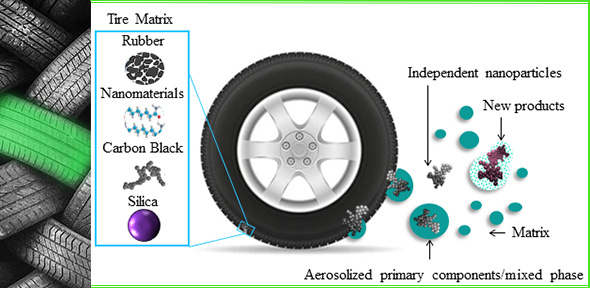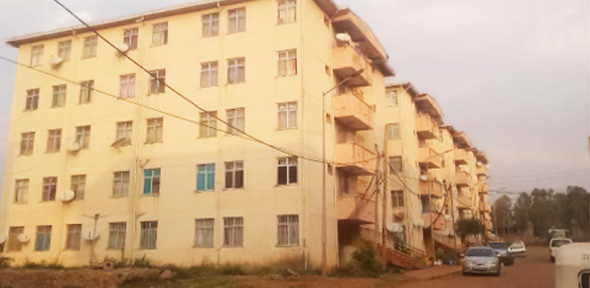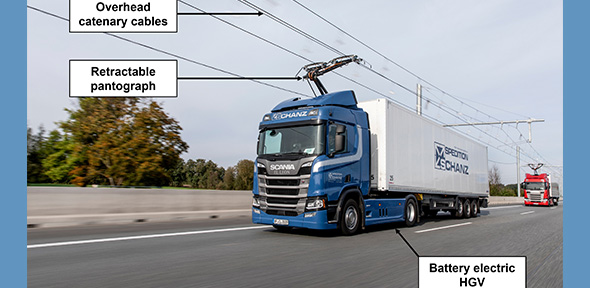
A number of Cambridge engineers have been awarded funding for various research projects focused on energy transitions to achieve net zero carbon by 2050.
Awarded by the University of Cambridge’s Energy Interdisciplinary Research Centre (IRC), the latest round of Small Grants will support interdisciplinary teams working across a variety of topics. These include:
- The impact of non-exhaust emissions on health
- Energy use in Ethiopian low-income housing
- Policy for low carbon emissions infrastructure projects in Ghana
- Energy justice assessment of tidal energy in the UK
- And an investigation into the electric road system infrastructure across different countries.
Funded by the Isaac Newton Trust / the Energy Policy Research Group (EPRG) and the Natural Environment Research Council (NERC) Discipline Hopping for Environmental Solutions initiative, these research projects will help to accelerate the transition to a zero carbon world.
Tyre-dust emissions and the move to electric vehicles

In order to make tyres and brakes more eco-friendly, researchers will investigate how nanoparticles are released from non-exhaust emissions. Credit: Dr Molly Haugen.
Dr Molly Haugen, Senior Research Associate in Emissions Measurement, will be joined by David O'Loughlin, PhD student in the MacFarlane group at the Medical Research Council (MRC) Toxicology Unit, to investigate the emerging issue of adverse health effects from tyre-dust emissions created by road vehicles (cars and trucks).
This research comes at a time when we are experiencing a global shift from combustion engines to heavier, electric vehicles, meaning a higher force on brakes and tyre friction on the road, leading to an increase in both of these emissions.
“The move to electric energy vehicles can increase the amount of non-exhaust particles emitted into the atmosphere,” said Dr Haugen. “The emission of these nanoparticles into the environment may pose a significant human health risk, since these small particles can be inhaled into the respiratory system and can affect the normal cellular function of the human body.”
The proposed research will begin in February at state-of-the-art facilities in Karlsruhe, in Germany, and also at the Karlsruhe Institute of Technology (KIT). The aim will be to generate tyre wear emissions and brake emissions during real-world driving events. Analysis will be carried out in March and April, using highly specialised particle instrumentation for size distribution and chemical composition. This will include varying the longitudinal and lateral force on the brake, required for heavier vehicles, typical of electric vehicles.
A toxicological analysis on the generated particles will investigate the health implications of brake-dust emissions. This process will take one-and-a-half months for a thorough analysis of 29 different elements, along with visual analysis of the particles using electron microscopy, due to be carried out early this year.
Dr Haugen added: “A detailed understanding of the characteristics of non-exhaust emissions, specifically nanoparticle emissions, and how these properties are affected by driving conditions, is not well known, yet it is needed in order to understand the toxicological implications of brake wear in the future energy vector of electric vehicles.
“Addressing this real-world problem that is evident in the electric energy system will have a lasting impact on policy, manufacturing and downstream research.”
Energy burden measurement and overheating in Ethiopian low-income housing

An IHDP housing block in Jimma, Ethiopia. Credit: Bardhan, R., Pan, J., Alemayehu, E. & Asres, B. (2022). Heat and health risks in transitional housing of Ethiopia. Cambridge-Africa Day, 6 July 2022.
Engineering PhD student Tze Yeung Cho will be joined by Jiayu Pan, PhD student in the Sustainable Design Group at the Department of Architecture, to complement an ongoing Cambridge-Africa ALBORADA-funded project called HEROES (Health and Energy impacts of Residential Overheating in Ethiopian Slum rehabilitation housing).
In this context, the researchers will study the Integrated Housing Development Programme (IHDP), which is led by the Government of Ethiopia to provide large-scale, affordable, high-rise residential condominiums to accommodate those on low incomes in the country’s rapidly growing cities.
According to the World Bank, in 2020, 64% of the urban population were living in slums in Ethiopia, with an annual decrease of around 3%. The World Health Organization (WHO) also predicts that deaths caused by an increase in temperature due to climate change can increase fivefold in Ethiopia by 2080. This is why it is equally crucial to tackle both the climate and housing crisis.
The new research will act as a pilot to inform a grant application for a larger project on reducing energy burden and improving the living environment for low-income households through adaptive housing design and advanced energy policies.
“It is important to understand the energy practices, sociocultural norms and indoor design performance in Ethiopia’s low-income households,” said Tze Yeung Cho. “This is needed to inform housing design and energy policy-making to help improve the quality of living environments and reduce the energy burden.”
He added: “The relocation from urban slums to rehabilitation housing will unavoidably alter the energy consumption behaviours of residents by increasing electrical appliance ownership, for example. Also, the low-income population are exposed to significant health and environmental risks, while the use of appliances like mechanical cooling devices to adjust the indoor environment (i.e. temperature and air quality) will create extra expenses on energy. This is why we will set out to develop a comprehensive understanding of the energy policies and occupants’ behaviour in low-income housing.”
To achieve this goal, the researchers will use a combination of quantitative approaches (modelling and simulation with computational fluid dynamics) and qualitative approaches (focus group discussion, key stakeholder interview and occupancy behaviour-related questionnaire surveys).
Tze Yeung Cho and Jiayu Pan will be supervised by Dr Ramit Debnath, Cambridge Zero Fellow and Research Associate at the Energy Policy Research Group (Judge Business School), and Dr Ronita Bardhan, principal investigator of the HEROES project, from the Department of Architecture.
Identifying policy instruments needed to drive the delivery of low carbon emissions infrastructure projects in sub-Saharan Africa

Roads and buildings as key infrastructure in Ghana. Credit: Tobias Nii Kwatei Quartey on Unsplash.
Dr Kwadwo Oti-Sarpong, Senior Research and Teaching Associate at the Cambridge Centre for Smart Infrastructure and Construction (CSIC), and Dr Rehema Msulwa, Research Associate at the Bennett Institute for Public Policy, are exploring the critical role of policy instruments as tools to guide the planning and delivery of low carbon public sector infrastructure projects in sub-Saharan Africa countries, with a focus on Ghana.
The researchers will carry out a review of carbon emissions and climate change government commitments and policies in Ghana, as well as conduct interviews and hold a roundtable discussion with stakeholders, before analysing the data and publishing the research findings in a policy paper.
“We hope the policy paper will help to inform infrastructure sector stakeholders of the important policy instruments that need to be developed to help guide the delivery of public sector projects in ways that will lead to the least carbon emissions,” said Drs Oti-Sarpong and Msulwa. “It is anticipated that this output will inform future decision-making in establishing a framework to guide the delivery of infrastructure projects sustainably.”
They added: “Infrastructure in key sectors is the bedrock of Ghana’s economic growth and development. Over the next two decades, the country’s infrastructure spending for buildings, transport, telecommunications, water and sanitation, backed by foreign investment, is projected to reach up to $96 billion (United Nations Development Programme, 2021). This investment boost is critical because extreme weather and rapid changes to Ghana’s climate present a profound risk to these sectors.”
The environmental and social impacts of tidal energy development in the Severn Estuary on the Severn Bore
A surfer rides the Severn Bore at Minsterworth. Credit: Lesmalvern.
Engineering PhD student Bowen Che will be joined by Dr Ramit Debnath, Cambridge Zero Fellow, to assess, along with physical impacts, the sociocultural impacts of tidal energy development in the Severn Estuary on the Severn Bore.
A new commission has been set up to explore tidal energy options for the Severn Estuary in meeting the UK’s long-term renewable energy targets. Around 50% of Europe’s tidal energy capacity lies in UK waters, mostly untapped. In support of the UK’s plan to reach net zero emissions by 2050, the Government is taking a new look into tidal energy development.
The Severn Bore is one of the natural wonders of the UK. It is a large tidal wave that can be seen in the Severn Estuary, where the tidal range is the second highest in the world (as much as 50 feet). Although the Severn Bore may lead to bank erosion and flooding, it is essential for the estuarine ecosystem, the tourism industry and the identity of the local community.
Attempts to build a Severn Barrage failed in 2010. The assessment report at the time suggested that barrage schemes are likely to result in loss of the Severn Bore. The report further suggested that, to confidently address the issue, more detailed modelling analyses was needed to quantify and test the effects of tidal energy development on the hydraulic, sediment and morphology regimes in the Severn Estuary.
In this new research, initial model development will be based on Bowen Che’s existing work on measuring and modelling tidal wave propagation in the Severn Bore and will leverage Professor Dongfang Liang’s body of work on hydrodynamic modelling.
“We will establish a three-dimensional hydrodynamic model for the Bristol Channel, Severn Estuary and low reach of the Severn River,” said Dr Debnath. “It will be used to quantify the environmental impact of tidal energy development on tidal oscillation and bore propagation.”
He added: “In addition, we will explore the sociocultural impacts of tidal energy developments using different technologies, such as barrages, lagoons and stream turbines, as well as through a survey instrument. The results can significantly contribute to promoting distributive justice policies (the socially just allocation of resources) and conserving ecological wellbeing in tidal energy development. In doing so, we connect engineering with the broader sustainable development goals.”
Strategies for electrification of road freight in different countries
Credit: Siemens Mobility GmbH, 2021. eHighway – Solutions for electrified road freight transport.
Parth Deshpande, PhD student in the Transportation Research Group at the Centre for Sustainable Road Freight, is analysing specific journeys made by Heavy Goods Vehicles (HGVs) around the world, focusing on the ones with the highest emissions in the most difficult geographies to help identify possible international decarbonisation solutions.
Road freight emissions form a significant part of a country's total emissions, despite the relatively small number of HGVs compared with cars. Therefore, one of the key steps for achieving net zero is to decarbonise road freight.
“While there are several methods to do so, it is vital to have a long-term strategy that would work across different countries so as to achieve a level of uniformity and economies of scale,” said Parth, who will be supervised by Professor David Cebon.
Work already carried out by the Centre – a collaboration between the University of Cambridge, Heriot-Watt and Westminster Universities and a consortium of industry partners – has investigated the feasibility and impact of electrifying HGVs across countries using electric road systems (ERS), that use overhead catenary cables to power HGVs, thus reducing the need for very large (and heavy) batteries.
A cost breakeven analysis was formulated to identify the locations where an ERS is economically viable. The road networks in England, France, India and South Africa were analysed in terms of their financial breakeven period, for which the ERS would be economically self-supporting. The differences in these countries were observed in terms of their road freight distribution and price sensitivity. This analysis revealed that up to 47% of the total road freight in England, 72% in France, 38% in India and 57% in South Africa could be electrified using ERS with a 15-year breakeven period.
It was established that the use of ERS reduces “windmill-to-wheel” emissions by approximately 10% compared to battery electric vehicles, and by varying amounts compared with diesel vehicles, depending on the grid carbon factor.
“In our research, we can analyse the journeys in detail by considering vehicle and driver parameters, such as the load carried, infrastructure costs and resources available over that journey, particularly battery and charger specifications,” added Parth.
“This could include integrating actual vehicle movement data from telematics to get a better picture of the energy consumption of vehicles over the journey. This analysis can lead to an overall system specification and identify the best strategy for international road freight decarbonisation.”



